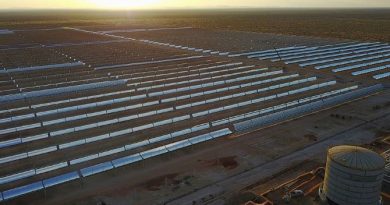Meat Consumption to increase says OECD-FAO Agricultural Outlook
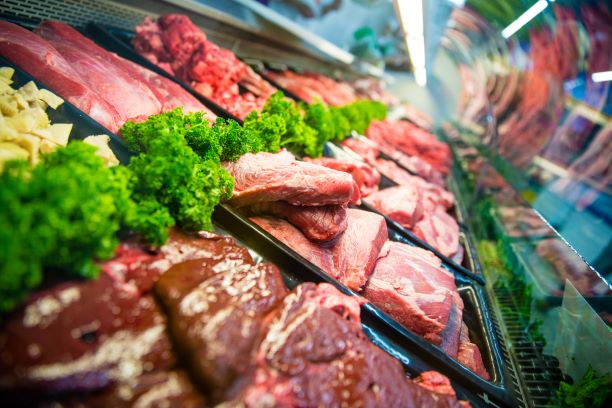
Even as coverage on meat talks about its contribution to warming, or the substitutes for meat being developed, it seems the data says otherwise. The World will eat more meat. While the US is leading the world’s consumption of Red meat, other main contributors to the meat production expansion are coming from Argentina, India, Mexico, The Russian Federation and surprisingly a relatively small country Turkey.
The latest OECD-FAO Agricultural Outlook 2018-2027, which include weights of beef, Veal, pork, Poultry and Sheep consumed per capita, shows that developed nations remain steadfastly meat consuming, with vegetarians or even vegans more the exception still. 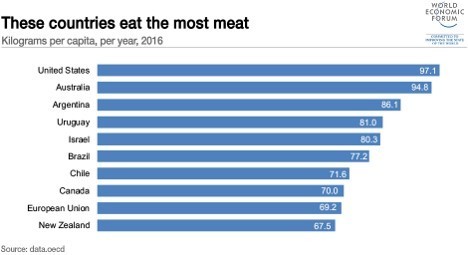
The Organization for Economic Cooperation and Development (OECD) which keeps tabs on the world’s meat-eating habits, regularly publishes data showing which of its member countries are the most carnivorous.
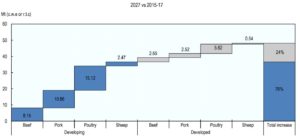
Overall world meat production increased by 1.25% to 323 Mt in 2017, along with the US, China remained the second largest contributor to the 2017 increase in meat production despite Avian Influenza outbreaks. That’s because besides eating pretty much everything and a lot of more of meat that noone does, the Chinese remain fans of pork, single handedly carrying that massively polluting industry ahead.
World meat trade increased to 31 Mt in 2017, 1.5% higher than in 2016, but growth was slower than the 5% registered in 2016. The Outlook projects that in the medium term prices will strengthen meat consumption, in particular, Latin America and Asia. The expansion of world meat trade exports in 2017 was largely led by Argentina, Canada, India, Thailand, the United States, and Ukraine whereas sales by the European Union and New Zealand declined.
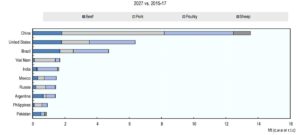
Global meat production is projected to be 15% higher in 2027 relative to the base period. Developing countries are projected to account for the vast majority of the total increase, with greater use of a grain-intensive feeding system in the production process.
Developed countries are still expected to account for more than half of global meat exports by 2027, but their share decreases slightly relative to the base period. The combined share of the two largest meat exporting countries, Brazil and the United States, is expected to increase to around 47%, contributing nearly two-thirds of the expected increase in global meat exports over the projection period.
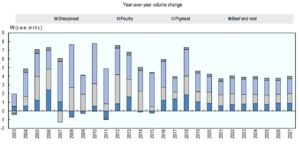
Total meat production is projected to expand by slightly more than 48 Mt by 2027, reaching nearly 367 Mt. Meat production continues to be dominated by Brazil, China, the European Union, the Russian Federation, and the United States. China’s production will benefit mostly due to growing economies of scale as small production units grow into larger and increasingly commercial enterprises.
Carbon Footprint of Red Meats
Environmentalist all over the world, point to high GHGs emitted for Red Meat production. It is a major contributor to global warming due to methane emitted by cattle and sheep. Vegetables grown in field, on the other hand, emit the least. For example, 1 kg of GHG is emitted to produce 50 Onions, whereas it takes only 44 Grams of red meat to produce the same amount.
New solutions: Lab-grown Meat and Flexitarian
It is possible to substitute Red meat with plant-based proteins like lentils, nuts and other legumes, which has a small impact on the environment. But for the meat lovers, award-winning startups like Impossible Foods and Beyond Meat offer vegetarian meats.
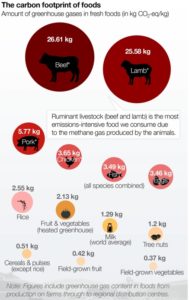
While we won’t stop you from enjoying your carnivore binges, all of us can do well if we can reduce the overall demand for the red meat which is estimated to rise with GHGs. When it comes to nutrition and health, an ‘all or nothing’ approach to meat isn’t required.
Flexitarian (‘flexibly vegetarian or semi-vegetarian’ – mostly vegetarian but with occasional intake of meat) diets seem to be gaining popularity. Driven by responsibility as well as utilitarianism, this remains the preferred way to manage meat consumption.
So what could change these numbers, or upset calculations of growth? Ageing populations in developed countries might yet surprise with a steeper cutback than expected if awareness builds up faster. In developing countries like India and China, it will be health scares from contaminated meat. We have already seen the impact on consumption when meat scams were unearthed, from dog meat disguised as mutton lately. Or the fear of high antibiotic use in farmed chicken. Or plastics and other pollutants in fish.
Figure credit: OECD-FAO; Image credit: The Conversation


